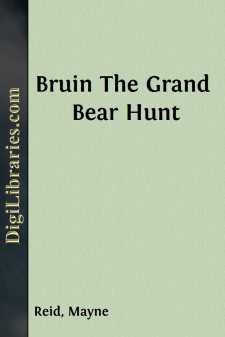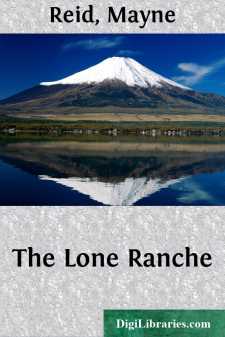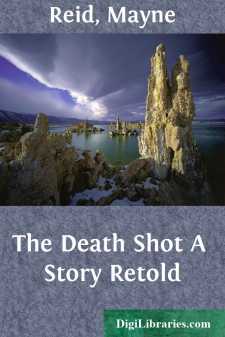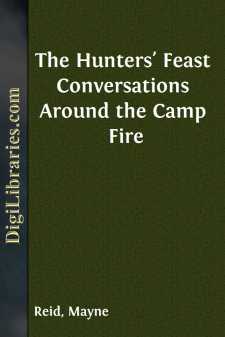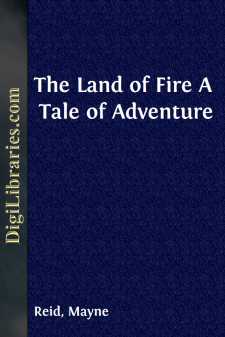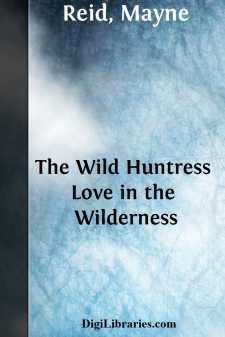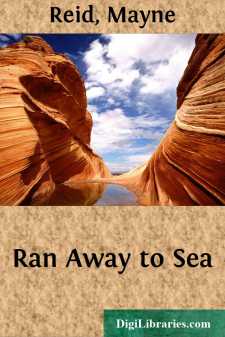Categories
- Antiques & Collectibles 13
- Architecture 36
- Art 48
- Bibles 22
- Biography & Autobiography 813
- Body, Mind & Spirit 142
- Business & Economics 28
- Children's Books 17
- Children's Fiction 14
- Computers 4
- Cooking 94
- Crafts & Hobbies 4
- Drama 346
- Education 46
- Family & Relationships 57
- Fiction 11829
- Games 19
- Gardening 17
- Health & Fitness 34
- History 1377
- House & Home 1
- Humor 147
- Juvenile Fiction 1873
- Juvenile Nonfiction 202
- Language Arts & Disciplines 88
- Law 16
- Literary Collections 686
- Literary Criticism 179
- Mathematics 13
- Medical 41
- Music 40
- Nature 179
- Non-Classifiable 1768
- Performing Arts 7
- Periodicals 1453
- Philosophy 64
- Photography 2
- Poetry 896
- Political Science 203
- Psychology 42
- Reference 154
- Religion 513
- Science 126
- Self-Help 84
- Social Science 81
- Sports & Recreation 34
- Study Aids 3
- Technology & Engineering 59
- Transportation 23
- Travel 463
- True Crime 29
Mayne Reid
Mayne Reid (1818-1883) was an Irish-American novelist renowned for his adventure novels that captivated young readers with their thrilling narratives and vivid depictions of the American frontier, Mexico, and other exotic locales. He served as a volunteer in the Mexican-American War, which profoundly influenced his writing, providing authentic details and a sense of adventure. Some of his most famous works include "The Headless Horseman" and "The Scalp Hunters," both of which reflect his fascination with the untamed wilderness and the conflicts between settlers and Native Americans.
Author's Books:
Sort by:
by:
Mayne Reid
Chapter One. The Palace Grodonoff. On the banks of the Neva, near the great city of Saint Petersburg, stands a splendid palace, known as the Palace Grodonoff. It is the property of a Russian nobleman of that name, as it is also his place of residence. Were you to drive up to the front gate of this grand palace, you would see a coat-of-arms sculptured in granite over the entrance. In this piece of...
more...
by:
Mayne Reid
The Great American Desert. There is a great desert in the interior of North America. It is almost as large as the famous Saära of Africa. It is fifteen hundred miles long, and a thousand wide. Now, if it were of a regular shape—that is to say, a parallelogram—you could at once compute its area, by multiplying the length upon the breadth; and you would obtain one million and a half for the...
more...
by:
Mayne Reid
A Tale of the Staked Plain. “Hats Off!” Within the city of Chihuahua, metropolis of the northern provinces of Mexico—for the most part built of mud—standing in the midst of vast barren plains, o’ertopped by bold porphyritic mountains—plains with a population sparse as their timber—in the old city of Chihuahua lies the first scene of our story. Less than twenty thousand people dwell within...
more...
by:
Mayne Reid
The Boors. Hendrik Von Bloom was a boor. My young English reader, do not suppose that I mean any disrespect to Mynheer Von Bloom, by calling him a “boor.” In our good Cape colony a “boor” is a farmer. It is no reproach to be called a farmer. Von Bloom was one—a Dutch farmer of the Cape—a boor. The boors of the Cape colony have figured very considerably in modern history. Although naturally...
more...
by:
Mayne Reid
"The Death Shot" Preface. Long time since this hand hath penned a preface. Now only to say, that this romance, as originally published, was written when the author was suffering severe affliction, both physically and mentally—the result of a gun-wound that brought him as near to death as Darke’s bullet did Clancy. It may be asked, Why under such strain was the tale written at all? A good...
more...
by:
Mayne Reid
A Hunting Party. On the western bank of the Mississippi, twelve miles below the embouchure of the Missouri, stands the large town of Saint Louis, poetically known as the “Mound City.” Although there are many other large towns throughout the Mississippi Valley, Saint Louis is the true metropolis of the “far west”—of that semi-civilised, ever-changing belt of territory known as the...
more...
by:
Mayne Reid
The Land of Anahuac. Away over the dark, wild waves of the rolling Atlantic—away beyond the summer islands of the Western Ind—lies a lovely land. Its surface-aspect carries the hue of the emerald; its sky is sapphire; its sun is a globe of gold. It is the land of Anahuac! The tourist turns his face to the Orient—the poet sings the gone glories of Greece—the painter elaborates the hackneyed...
more...
by:
Mayne Reid
Preface. This tale is the last from the pen of Captain Mayne Reid, whose stories have so long been the delight of English boys. Our readers may, perhaps, like to know something of the writer who has given them so much pleasure; especially as his own life was full of adventure and of brave deeds. Mayne Reid was born in the north of Ireland in 1819; his father was a Presbyterian minister, and wished that...
more...
by:
Mayne Reid
Chapter One. The Squatter’s Clearing. The white-headed eagle, soaring above the spray of a Tennessean forest, looks down upon the clearing of the squatter. To the eye of the bird it is alone visible; and though but a spot in the midst of that immense green sea, it is conspicuous by the colour of the trees that stand over it. They stand, but grow not: the girdling ring around their stems has deprived...
more...
by:
Mayne Reid
Chapter One. I was just sixteen when I ran away to sea. I did not do so because I had been treated unkindly at home. On the contrary, I left behind me a fond and indulgent father, a kind and gentle mother, sisters and brothers who loved me, and who lamented for me long after I was gone. But no one had more cause to regret this act of filial disobedience than I myself. I soon repented of what I had...
more...


